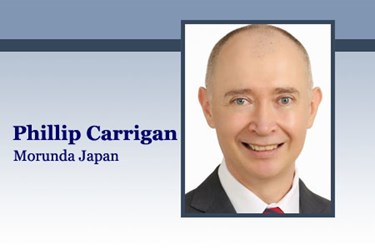Pharma Companies In JPAC Are Searching For The Goldilocks Candidate

By Philip Carrigan, representative director, Morunda Japan

I sat and listened to the Japan and Asia Pacific (JPAC) Vice President describe the ideal candidate that she was looking for as a Regional Medical Affairs Director of an American Pharmaceutical company. She described what I call the “Goldilocks candidate” — a person who is not too experienced or too inexperienced and has few job changes. The candidate should be able to communicate effectively but not overshare while still being open and accurate. In essence, a candidate that is “just right.”
She was looking for a candidate that has grown their career at one or two companies and has been promoted. She suggested that there should be a linear and logical narrative to the resume, the best candidates have these characteristic. Their skills and knowledge pancake over time. “There should be clear promotions and accomplishments every two years of so. This indicated that their present employer sees their potential, which probably indicates the person is an effective communicator.” The VP paused and explained, “in terms of red flags, if the only time the person got a promotion is through a job change, then this is a deal breaker.” She suggested that type of candidate interviews well but may not deliver. After all, the greatest predictor of future performance are past achievements.
This got me thinking. What are the ideal number of job changes? What is typical academic profile of candidates? We looked at candidates placed by Morunda from 2013 to 2015 at European and American pharmaceutical companies throughout JPAC. The candidates ranged from manager to senior director and VP for commercial, medical and development functions.
As indicated in Figure 1, nearly 30 percent of candidates have worked for only one company before making a move, while more than 58 percent of candidates have worked for only two companies. When we include candidates that have worked for three companies at all levels then a whopping 82.4 percent of candidates fall into these buckets. On the other end of the scale, around 17 percent of candidates have had more than four job changes. All of this evidence suggests that the more job changes a person has the less likely they will be hired subsequently.

Figure 1
A cursory glance at Figure 2 looking at placed candidates in JPAC per job change by gender would indicate females have a longer tenure at their companies before making a change. Sixty-five percent of females have worked at only two companies before moving to their third versus 55 percent of male candidates. Male candidates who have worked at three or four companies equals 37 percent while only 30 percent of female candidates have worked at three companies.

Figure 2
Next we looked at the candidate’s academic background. It is not surprising to see most of the candidates who were placed had a scientific qualification. Furthermore, we believe there is a strong demand for candidates in commercial roles to understand the basics of science. For medical functions, PhDs and pharmacists are currently in high demand.

Figure 3
There is no magic formula to find our “goldilocks candidate.” However, the data would suggest that candidates who have one or two job changes with a science degree are the kinds of employees pharma companies across Asia are seeking.
Bio: Philip Carrigan is representative director at Morunda Japan, a pharmaceutical executive search firm.
